Athletic facility managers, parks departments, and recreation centers work tirelessly to serve as many participants as possible while managing court, equipment, and staffing resources. They balance what activities are popular and effective with what resources are available to implement them. In recent years, more organizations have created pickleball courts. To help organizations interested in installing pickleball courts or converting old tennis courts to pickleball, we’ve developed some tips based on our years of experience installing courts that are not only fun for players, but safe, durable, and low maintenance for those tasked with upkeep of the courts.
What is pickleball?
Pickleball is a racquet sport that combines elements of tennis, ping pong, and badminton. Players take turns hitting a perforated plastic ball (similar to a whiffle ball) over a net slightly shorter than a tennis net. It can be played indoors or outdoors. The rules and scoring are simple, and the game can be enjoyed by people of all ages and ability levels. A combination of small courts, slow play, and early wins can make it easier to coax more participants to have fun while being physically active.
For those who get serious about the sport, there is an International Federation of Pickleball that holds tournaments and works to get pickleball accepted as an Olympic sport. They issue rule books to their 70 member countries (including USA Pickleball) and offer articles on topics like improving your two-handed backhand.
What are the benefits of creating a pickleball court?
Pickleball courts save space: A pickleball court is about half the length and width of a tennis court, allowing more users to play in less space than is possible with tennis and other sports. For a school running gym classes or a facility serving many clients, pickleball allows more players to participate simultaneously in the same space.
More people can play pickleball: Pickleball is easy for beginners to pick up, giving new players more confidence to participate. Both laid-back doubles teams and more competitive players can get cardio benefits from playing on the same court.
Pickleball costs less: Pickleball is inexpensive for both the organization and the players. Unlike tennis and golf, which can require expensive equipment and maintenance, pickleball requires mainly a flat space, a net, and inexpensive paddles and balls.
Pickleball requires less staff involvement: Pickleball can be played as singles or doubles, so facility owners don’t have to organize or equip large teams. Individuals and pairs can sign up for court time and play with minimal oversight.
What attributes should facility managers look for on a pickleball court surface system?
Good pickleball court surface materials provide for good game play, reduce stress on players’ joints, prevent slips, absorb some of the energy of footfall and occasional falls, and perform well for years. They are easy to maintain and resist normal wear and weather. Priorities include:
Shock absorption: Hard surfaces are hard on athletes—they get tired more easily and experience more joint pain. This can be especially important for senior centers and all-ages facilities where a more forgiving surface will allow all athletes to keep playing longer.
Slip resistance: Slips and falls are among the most common accidents in any environment, and outdoor courts are no exception. A pickleball court that is slip resistant will be usable sooner after rains—and safer every day.
Easy maintenance: Durable sports surfaces spend more time in play and less time being patched, mowed, and otherwise tended. Facility managers and sport park managers need a playing surface that will provide satisfactory performance for years.
The ideal surface for pickleball
To meet all of those needs, Action Floor Systems has developed the Action Herculan PB Pro Series. This series is an eco-friendly, seamless, cushioned court system with point elastic properties. They combine high performance and durability with a recycled rubber base layer, a high-quality elastic polyurethane wear layer, and a structured polyurethane UV top-coating. The system can be installed indoors or out to create a new playing surface or rebuild old hard courts. The Herculan PB Pro Series is resistant to UV and weather, providing more years of safe play, and when the time comes, it can be resurfaced quickly and economically.
Synthetic sports Action Herculan PB court surfaces are an investment in worry-free operations, and the lack of required maintenance over time is a boon to cost-conscious recreation departments and athletic facilities. A resurfaced asphalt court will likely need to be repaired again in three years, where a synthetic court is expected to perform well and remain safe many years longer. (Read a case study about resurfacing old courts here.)
What are the hazards of a low-quality court?
Low-quality courts create safety hazards and maintenance problems that increase the worry and workload of court owners. Injured players and cracking or peeling court surfaces create costs that make “cheap” surfacing more expensive than a good-quality court surface.
- Indoors, some organizations have applied vinyl flooring that has not performed well over time. Upgrading can eliminate tripping hazards, vanishing paint lines and dirt-collecting cracks.
- Gym floors, often surfaced with wood or rubber, provide some protection to players’ joints but can be slippery for pickleball. A purpose-built court will better meet players’ needs, especially older players who are at higher risk of falling.
- Outdoors, many tennis courts and other ball sports fields were created with materials that crack in heat, heave in cold, and deteriorate in the sun. Court surfaces typically need to be redone every 3-5 years. Action Herculan PB Pro Series can go longer between rebuilds and can be resurfaced easily.
- And although concrete and asphalt have been considered acceptable, they don’t have the “give” that reduces player injuries. (Learn more about hard courts vs. engineered sports surfaces here.) Customers have noticed that players can play longer and more comfortably with more shock absorption.
The features of Action Floor Systems Herculan Pickleball system will enhance player experiences and reduce risk for many years to come, providing peace of mind that pays for itself.
How do I get started creating pickleball facilities?
Contact us at Action Floor Systems. We will partner with you to evaluate your site and your customers, find the best solution for your facility goals, install your new field(s) efficiently, and get your organization back up and running. Fill out our handy Action Floor contact form to be connected with an expert for your project.
What other courts can be created with engineered surfaces?
Action Floor Systems provides sports surface solutions for gyms, fieldhouses, squash/racquetball courts, tennis, weight rooms and arenas. To see other flooring options, check out these Action Floor Systems Recommendations.

























